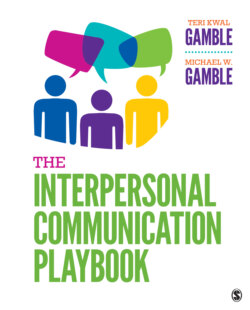Читать книгу The Interpersonal Communication Playbook - Teri Kwal Gamble - Страница 125
На сайте Литреса книга снята с продажи.
Schemata
ОглавлениеFour perceptual schemata, or cognitive frameworks, help us decide what others are like and whether we would like to get to know them better:
1 Physical constructs enable us to classify people according to their physical characteristics, including age, weight, and height.
2 Interaction constructs point us toward their social behavior cues; for example, are they friendly, arrogant, aloof?
3 Role constructs focus on their social position; for example, are they professors, students, administrators?
4 Psychological constructs lead us to classify people according to such things as their generosity, insecurity, shyness, and sense of humor.
Which of these schemata are you conscious of using when you first meet someone?
Reflect on This: Attribution Theory
Reverend Jesse Jackson speaks at the UN for the International Day for the Elimination of Racial Discrimination. March 21, 2012. United States Mission Geneva.
Licensed with CC BY 2.0, https://creativecommons.org/licenses/by/2.0/deed.en.
Research has confirmed our tendency to attribute another’s behavior to internal variables while underestimating the impact of situational or environmental variables. Can you show how this works?
1 Use attribution theory and the fundamental attribution error to provide a rationale for the following lines from a speech by the Reverend Jesse Jackson:Most poor people are not lazy. They catch the early bus. They raise other people’s children. They clean the streets. No, no, they’re not lazy.
2 Using your understanding of the nature of perception, explain this statement:We find causes where we look for them.
Then, draw an example from personal experience to illustrate the statement’s meaning.
Source: See, for example, Jessica Li Yexin, Katherine A. Johnson, Adam B. Cohen, Melissa J. Williams, Eric D. Knowles, and Chen Zhansheng, “Fundamental(ist) Attribution Error: Protestants Are Dispositionally Focused,” Journal of Personality and Social Psychology, 102, 2012, pp. 281–290; and Didier Truchot, Gwladys Maure, and Sonia Patte, “Do Attributions Change over Time When the Actor’s Behavior Is Hedonically Relevant to the Perceiver?” Journal of Social Psychology, 143, 2003, pp. 202–208.
